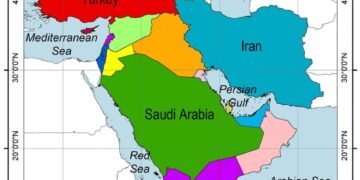The currency exchange market is a fundamental component of the global economy, serving as the mechanism through which currencies are bought, sold, and exchanged. This article delves into the economic dynamics of currency exchange, exploring the factors that influence exchange rates, their impacts on various stakeholders, and emerging trends shaping the market.
Factors Influencing Currency Exchange Rates:
- Interest Rates: Central bank interest rate policies influence currency values by affecting investment flows. Higher interest rates attract foreign investment, leading to currency appreciation, while lower rates may result in depreciation.
- Economic Indicators: Economic data such as GDP growth, inflation rates, employment figures, and trade balances impact currency valuations. Strong economic performance typically strengthens a currency, while weak indicators can lead to depreciation.
- Political Stability: Political stability and governance play a significant role in currency valuation. Countries with stable political environments generally have stronger currencies, as they attract investment and foster confidence among investors.
- Market Sentiment: Market sentiment and speculation influence short-term fluctuations in exchange rates. Traders’ perceptions of economic and geopolitical developments can lead to rapid changes in currency values.
- Supply and Demand: Like any other asset, currencies are subject to the laws of supply and demand. Factors such as trade flows, capital flows, and foreign investment determine the demand for and supply of currencies, thereby influencing exchange rates.
Impacts of Currency Exchange Rates:
- International Trade: Exchange rate movements affect the competitiveness of exports and imports. A weaker domestic currency makes exports more competitive but can increase the cost of imports, leading to trade imbalances.
- Investment Flows: Currency exchange rates influence investment decisions, as investors seek opportunities in countries with strong currencies and stable economic prospects. Exchange rate fluctuations can impact returns on foreign investments.
- Inflation and Monetary Policy: Exchange rate movements influence inflationary pressures by affecting the prices of imported goods and services. Central banks may adjust monetary policy in response to currency fluctuations to maintain price stability.
- Tourism and Travel: Exchange rate fluctuations impact the cost of international travel and tourism. A stronger domestic currency makes outbound travel more affordable for residents but can deter inbound tourism.
- Financial Markets: Currency exchange rates affect the profitability of international businesses, financial institutions, and investors engaged in foreign exchange trading, hedging, and arbitrage activities.
Trends in Currency Exchange Markets:
- Digital Transformation: The rise of electronic trading platforms and algorithmic trading has transformed the currency exchange market, making it more accessible, efficient, and transparent.
- Increased Volatility: Geopolitical tensions, trade disputes, and economic uncertainties have contributed to heightened volatility in currency exchange rates, creating challenges and opportunities for traders and investors.
- Shifts in Reserve Currencies: The dominance of traditional reserve currencies such as the US dollar is being challenged by the emergence of alternative currencies and digital assets, leading to diversification in currency reserves.
- Central Bank Digital Currencies (CBDCs): Central banks are exploring the potential issuance of digital currencies to enhance payment systems, improve financial inclusion, and address challenges posed by cryptocurrencies and stable coins.
- Regulatory Developments: Regulators are focusing on enhancing transparency, mitigating risks, and combating fraud in the currency exchange market through regulatory reforms, supervision, and enforcement actions.
Currency exchange rates play a pivotal role in the global economy, influencing trade, investment, inflation, and financial markets. Understanding the economic factors driving currency exchange rates is essential for businesses, policymakers, investors, and individuals engaged in international transactions. By monitoring market trends, assessing risk factors, and implementing appropriate strategies, stakeholders can navigate currency exchange dynamics and mitigate potential risks while capitalizing on opportunities for growth and prosperity in an increasingly interconnected world.

 English
English






































